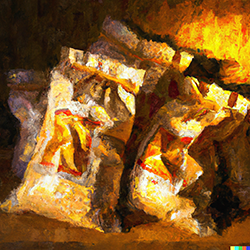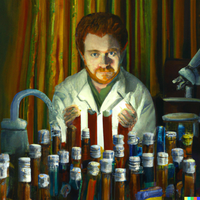The Miracle of Modern Beer Yeasts!
Posted by Matteo Lahm on 21st Dec 2022
When you make your next batch, you might want to spend a little extra time to make your yeast selection. You have hundreds of engineered beer yeast choices at your disposal, and all of them will leave their unique stamp on your beer! Prior to the modern era, you had to use natural yeasts to convert the sugars in grains into alcohol. However, in recent decades, engineered yeasts have opened the door to a brave new world in beer making.
You can use the same grain, malt, hops and adjuncts and just by changing the yeast, you will end up with a different beer. Different beer yeast strains produce different flavors because each strain has its own unique characteristics. They are determined by the strain’s genetics, which can be altered by the brewer through a variety of techniques. Each strain has its own distinct metabolic rate, which allows it to convert the sugars present in the beer’s ingredients into alcohol and other flavor compounds. Different strains also produce different levels of esters and phenols, which create fruity and spicy flavors, respectively. Yeast directly contributes to the beer’s body, flavor, and head retention. Just by utilizing different yeast strains, you can create a wide variety of beers even if you use the same ingredients.
Engineered beer yeasts are genetically modified special varieties that can be divided into two broad categories: laboratory-generated yeasts and hybrid yeasts.

Laboratory-generated yeasts are created by scientists in the laboratory using genetic engineering techniques, such as the insertion of foreign genes into the yeast genome to achieve very specific results. One of the earliest examples of engineered beer yeast is White Labs' WLP001 California Ale Yeast, which was developed in the 1970s. This yeast produces a beer that is crisp, clean, and slightly sweet. It also produces an abundance of fruity esters, giving the beer a balanced flavor profile that is both malty and hoppy. Another example of engineered beer yeast is White Labs' WLP090 San Diego Super Yeast, which was developed in the 2000s. This yeast is designed to produce beers that are intensely hoppy and citrusy. It is often used to create beers with flavors of orange, grapefruit, and pineapple. It also produces a unique spicy flavor that helps to balance out the hoppiness of your beer.
Hybrid yeasts, on the other hand, are produced by combining two different strains of yeast in the laboratory, usually from different species. This creates a new strain of yeast with the desired characteristics of both parent strains. Some of the most popular hybrid beer yeasts include Kölsch, German Altbier, Saison, and Belgian Ale. Kölsch yeast is a hybrid of ale and lager yeast, which produces a light and crisp beer with a subtle fruity aroma. The flavor profile of Kölsch is balanced, with hints of fruitiness and a dry finish. This hybrid yeast is often used to make German-style Kölsch beer. German Altbier yeast is a hybrid of ale and lager yeasts, producing a beer with a subtle maltiness and a dry finish. This hybrid yeast is often used to make German-style Altbier beer, which has a dark amber color and a smooth, malty flavor. Saison yeast is a hybrid of ale and wheat yeasts, producing a beer with a spicy and fruity aroma. This hybrid yeast is often used to make Belgian-style Saison beer, which has a light golden color and a slightly tart, spicy flavor. Lastly, Belgian Ale yeast is a hybrid of ale and wheat yeasts, producing a beer with a complex fruity aroma and a dry finish. This hybrid yeast is often used to make Belgian-style ales, which have a deep golden color and a sweet, fruity flavor.
Overall, engineered beer yeasts have revolutionized beer making, allowing you to continue to explore new styles and flavors. By combining different strains of yeast, you can create unique beers with a wide variety of flavors, aromas, and alcohol tolerances. In the future, engineered yeasts will continue to evolve and when you consider the sheer volume of yeast, grain, hops, adjuncts and the different techniques you can use to brew your beer, the possibilities are just mind boggling! With an adventurous spirit, you can deliberately never make the same beer twice.

